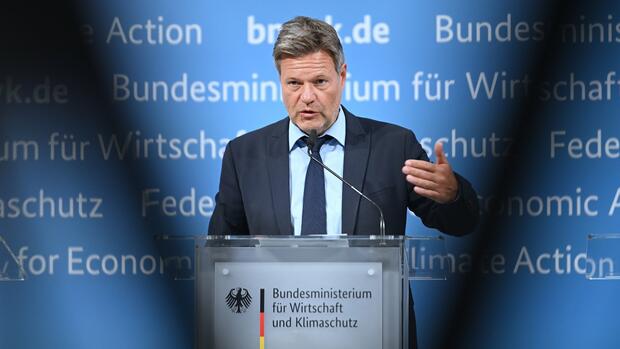Berlin Federal Minister of Economics Robert Habeck (Greens) wants to push the construction of wind turbines on land. He announced on Tuesday that more space should be made available, qualified specialists should be recruited in a more targeted manner and the transport of wind turbines should be made easier. Habeck had previously exchanged views with state politicians and industry representatives.
The additional acceleration measures are part of a “wind energy on land strategy” that the ministry presented on Tuesday. The strategy aims to create the conditions for installing onshore wind turbines with a capacity of 160 gigawatts (GW) by 2035. It is currently almost 60 GW.
It took more than 20 years to get to this value. If Germany wants to reach the target of 160 GW by 2035, the pace of expansion must increase significantly.
Last year, Habeck launched a series of acceleration measures for the expansion of renewables with the so-called “Easter package”. According to the minister, the positive effects are already noticeable: “We are seeing initial successes,” said the Green politician. “We think it’s possible to double the expansion to four gigawatts this year.”
For comparison: in 2022 it was 2.1 gigawatts, which corresponded to an increase of 30 percent over the previous year. In the years that follow, however, ten GW will have to be added each year in order to achieve the political goals. In 2017, the year with the historic peak in new construction, it was almost six GW.
The industry shares Habeck’s confidence: “The optimism for the future is quite justified. We see 60 percent more permits in the first quarter of 2023,” said Wolfram Axthelm, Managing Director of the German Wind Energy Association (BWE), the Handelsblatt.
Habeck wants to support industry in the field of wind energy
The increase is fed by three federal states – North Rhine-Westphalia, Lower Saxony and Schleswig-Holstein, said Axthelm. If all federal states now use the possibilities of the new laws, a stabilization of the increase across Germany is realistic.
With the additional measures, Habeck now wants to support the wind energy industry in Germany and Europe in ramping up production capacities. The strategy states that “accompanying, temporary measures” are planned to strengthen the competitiveness of German and European manufacturers and suppliers.
With regard to the simplifications announced by Habeck for the transport of wind turbines, the strategy states that the aim is to “significantly streamline and accelerate the complex, time-consuming and costly approval processes for transport, especially for wind rotor blades”. To this end, “first measures have been identified” that are now being implemented quickly.
>> Read here: Dena paper shows how the energy transition should still work
Industry insiders report that it currently takes “an average of six to eight weeks” for a large and heavy transport to be approved. Around ten of these transports are required for each wind turbine.
Freight forwarders complain about low margins when transporting wind turbines
If an approval and thus the transport is delayed, the client usually demands a contractual penalty from the freight forwarder. “Many customers expect that the contractor has to submit the permit by a certain point in time,” reports a shipper about the enormous cost pressure.
The problems led to employees resigning and meanwhile “many transport companies are giving up”. The motivation with low margins and high risk has “been at its lowest point for months”. The special vehicles required for the transport alone cost 7.5 million euros – as much as 63 conventional trucks that can drive without expensive permits.
North Rhine-Westphalia, Lower Saxony and Schleswig-Holstein are at the forefront when it comes to expanding wind power on land.
(Photo: dpa)
Because the problems are so big, the federal government is promoting inland shipping. After a crisis talk with the industry, the parliamentary state secretary in the Federal Ministry of Transport, Oliver Luksic (FDP), pointed out to the transport associations that his department was working with the Ministry of Economics “intensively on waterway networks, including transhipment points for wind turbines and cable drums in the main leg”.
>> Read here: Which is why the rapid expansion of wind energy is in danger of failing
Hubs are also to be created along the waterways. The letter is available to the Handelsblatt. Luksic advertises “making increased use” of the waterways and “gradually” converting transport.
In addition, according to the strategy, research for wind energy technology should be promoted more. In addition, the ministry is promising better integration of wind energy expansion and power grid expansion.
More: In Germany, six wind turbines must be set up every day by 2029
